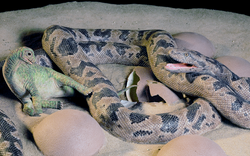| List of years in paleontology |
|---|
| (table) |
Paleontology or palaeontology is the study of prehistoric life forms on Earth through the examination of plant and animal fossils . [1] This includes the study of body fossils, tracks ( ichnites ), burrows , cast-off parts, fossilised feces ( coprolites ), palynomorphs and chemical residues . Because humans have encountered fossils for millennia, paleontology has a long history both before and after becoming formalized as a science . This article records significant discoveries and events related to paleontology that occurred or were published in the year 2010.
Contents
- Plants
- Bennettitales
- Cycadales
- Czekanowkiales
- Pinales
- Pteridospermopsida
- Angiosperms
- Other plants
- Molluscs
- Newly named bivalves
- Arthropods
- Fishes
- Amphibians
- Newly named amphibians
- Basal reptiles
- Newly named basal reptiles
- Ichthyopterygians
- Newly named ichthyopterygians
- Lepidosauromorphs
- Newly named plesiosaurs
- Newly named basal lepidosaurs
- Newly named lizards
- Newly named snakes
- Turtles
- Newly named turtles
- Archosauromorphs
- Newly named basal archosauromorphs
- Archosaurs
- Synapsids
- Newly named non-mammalian synapsids
- Mammals
- Other animals
- Footnotes
- Complete author list
- References


